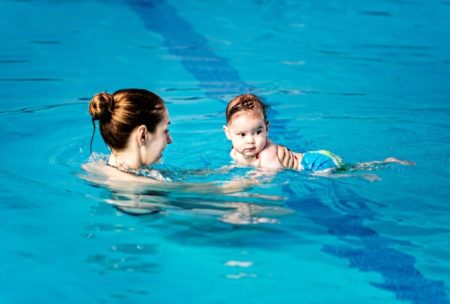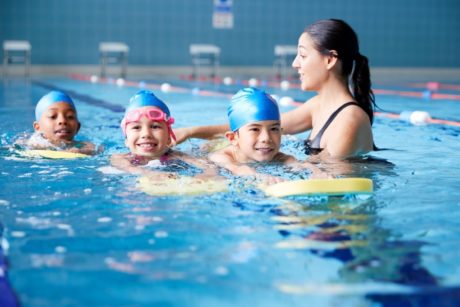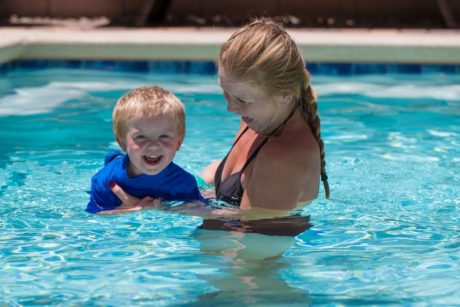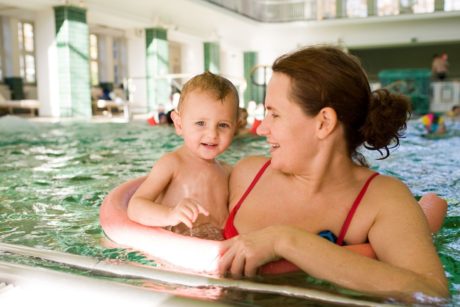This course is designed for those interested to learn the basics of teaching babies how to swim, the different ways to hold babies, and the best activities with toys for babies to learn swimming. Read more.
In HomeSwim we believe that swimming is not only a fantastic recreational sport but a lifelong life-saving skill.
Access all courses in our library for only $9/month with All Access Pass
Get Started with All Access PassBuy Only This CourseAbout This Course
Who this course is for:
- Parents
- Infant instructors
- Swimming instructors
- Swim School owners and coordinators
- Those interested in teaching babies how to swim
What you’ll learn:
- Teaching Toddlers learn to swim from 12 to 24 months
Requirements:
- You should be able to use computer or smart phones in basic level
These are some of the questions that people always ask us:
– Why do we need to start swimming lessons at such an early age?
– What is the best age for them to start swimming lessons?
– How is this supposed to work if babies can’t understand instructions?
– Does this help babies in their swimming education or is it just a fun time in the water?
Well, first of all, water is a wonderful environment for babies as they were created in very similar conditions. Babies also have limited movements on land due to a weak and developing muscular system; however, they can move freely in the water, which will speed their growing process.
It is also very important to understand that play is the best way for babies to learn; they love wandering around and discovering their surroundings with tasting, touching and playing. It is true that they don’t understand most of the verbal instructions. However, they respond to conditioning and in these classes, we educate parents about how to make this happen.
After many years of experience, we can now agree that children who start their swimming education with babies and toddlers swimming backgrounds perform much better than those who are new to swimming. Swimmers with this background tend to have magnificent water familiarisation, buoyancy, and mobility skills. This means they enjoy swimming lessons much more than others with no background.
Our Promise to You
By the end of this course, you will have learned how to teach babies how to swim.
10 Day Money Back Guarantee. If you are unsatisfied for any reason, simply contact us and we’ll give you a full refund. No questions asked.
Get started today and learn more about teaching swimming.
Course Curriculum
| Section 1 - Introduction | |||
| Welcome | 00:00:00 | ||
| Course Structure | 00:00:00 | ||
| Section 2 - Philosophy | |||
| General Questions | 00:00:00 | ||
| Philosophy | 00:00:00 | ||
| Parent And Child Relationship | 00:00:00 | ||
| Section 3 - How To Hold The Baby | |||
| Cradle Hold | 00:00:00 | ||
| Carry Hold | 00:00:00 | ||
| Protective Or Hello World Hold | 00:00:00 | ||
| Hip Or Side Hold | 00:00:00 | ||
| The Extended Face To Face Hold | 00:00:00 | ||
| The Extended Facing Away Hold | 00:00:00 | ||
| Head On The Shoulder Back Hold | 00:00:00 | ||
| Back Hold | 00:00:00 | ||
| Kick Hold | 00:00:00 | ||
| Section 4 - Student Needs | |||
| Water Quality | 00:00:00 | ||
| Water Familiarization, Buoyancy And Mobility | 00:00:00 | ||
| What You Need Before You Start | 00:00:00 | ||
| Section 5 - Class Structure For Toddlers 12 To 24 Months Old | |||
| Safe Entry | 00:00:00 | ||
| Greeting – Tick Tock | 00:00:00 | ||
| Crocodile | 00:00:00 | ||
| Humpty Dumpty | 00:00:00 | ||
| Tunnel And Monkey | 00:00:00 | ||
| Tunnel And Kick | 00:00:00 | ||
| Tunnel And I Go You Go | 00:00:00 | ||
| Swim To The Toy | 00:00:00 | ||
| Noodle And Chasing Toys | 00:00:00 | ||
| Starfish Or Pancake | 00:00:00 | ||
| Running Off The Mat | 00:00:00 | ||
| Goodbye – Teddy Bear | 00:00:00 | ||
| Safe Exit | 00:00:00 | ||
About This Course
Who this course is for:
- Parents
- Infant instructors
- Swimming instructors
- Swim School owners and coordinators
- Those interested in teaching babies how to swim
What you’ll learn:
- Teaching Toddlers learn to swim from 12 to 24 months
Requirements:
- You should be able to use computer or smart phones in basic level
These are some of the questions that people always ask us:
– Why do we need to start swimming lessons at such an early age?
– What is the best age for them to start swimming lessons?
– How is this supposed to work if babies can’t understand instructions?
– Does this help babies in their swimming education or is it just a fun time in the water?
Well, first of all, water is a wonderful environment for babies as they were created in very similar conditions. Babies also have limited movements on land due to a weak and developing muscular system; however, they can move freely in the water, which will speed their growing process.
It is also very important to understand that play is the best way for babies to learn; they love wandering around and discovering their surroundings with tasting, touching and playing. It is true that they don’t understand most of the verbal instructions. However, they respond to conditioning and in these classes, we educate parents about how to make this happen.
After many years of experience, we can now agree that children who start their swimming education with babies and toddlers swimming backgrounds perform much better than those who are new to swimming. Swimmers with this background tend to have magnificent water familiarisation, buoyancy, and mobility skills. This means they enjoy swimming lessons much more than others with no background.
Our Promise to You
By the end of this course, you will have learned how to teach babies how to swim.
10 Day Money Back Guarantee. If you are unsatisfied for any reason, simply contact us and we’ll give you a full refund. No questions asked.
Get started today and learn more about teaching swimming.
Course Curriculum
| Section 1 - Introduction | |||
| Welcome | 00:00:00 | ||
| Course Structure | 00:00:00 | ||
| Section 2 - Philosophy | |||
| General Questions | 00:00:00 | ||
| Philosophy | 00:00:00 | ||
| Parent And Child Relationship | 00:00:00 | ||
| Section 3 - How To Hold The Baby | |||
| Cradle Hold | 00:00:00 | ||
| Carry Hold | 00:00:00 | ||
| Protective Or Hello World Hold | 00:00:00 | ||
| Hip Or Side Hold | 00:00:00 | ||
| The Extended Face To Face Hold | 00:00:00 | ||
| The Extended Facing Away Hold | 00:00:00 | ||
| Head On The Shoulder Back Hold | 00:00:00 | ||
| Back Hold | 00:00:00 | ||
| Kick Hold | 00:00:00 | ||
| Section 4 - Student Needs | |||
| Water Quality | 00:00:00 | ||
| Water Familiarization, Buoyancy And Mobility | 00:00:00 | ||
| What You Need Before You Start | 00:00:00 | ||
| Section 5 - Class Structure For Toddlers 12 To 24 Months Old | |||
| Safe Entry | 00:00:00 | ||
| Greeting – Tick Tock | 00:00:00 | ||
| Crocodile | 00:00:00 | ||
| Humpty Dumpty | 00:00:00 | ||
| Tunnel And Monkey | 00:00:00 | ||
| Tunnel And Kick | 00:00:00 | ||
| Tunnel And I Go You Go | 00:00:00 | ||
| Swim To The Toy | 00:00:00 | ||
| Noodle And Chasing Toys | 00:00:00 | ||
| Starfish Or Pancake | 00:00:00 | ||
| Running Off The Mat | 00:00:00 | ||
| Goodbye – Teddy Bear | 00:00:00 | ||
| Safe Exit | 00:00:00 | ||




